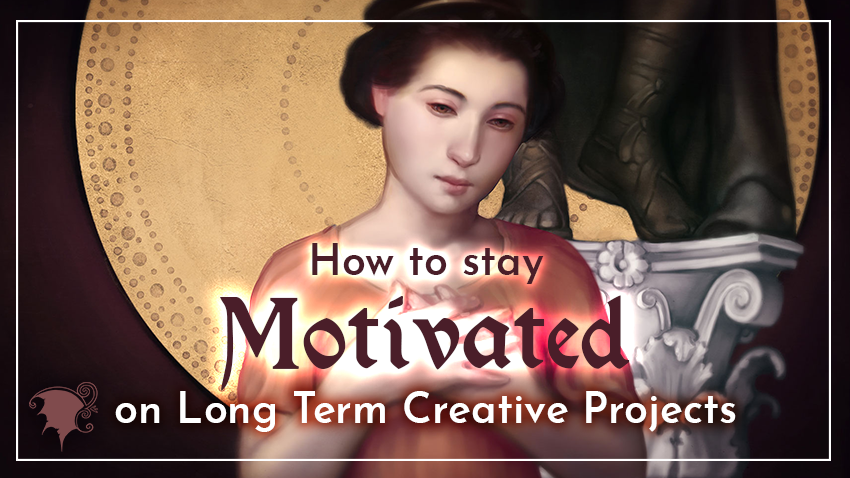Creating Motivation
There’s plenty of things outside of my control that can my kill motivation. I may be feeling down, or have some boring but necessary tasks, or life may be generally getting in the way.
So I can’t control whether or not I want to work on my creative projects.
However, I can create a strong foundation for them, break down my tasks so that they’re more manageable, create strong characters that inspire me to write their stories, and employ meaningful conflict so that I improve my chances not only of continuing the project to the end, but wanting to.
Build a Foundation
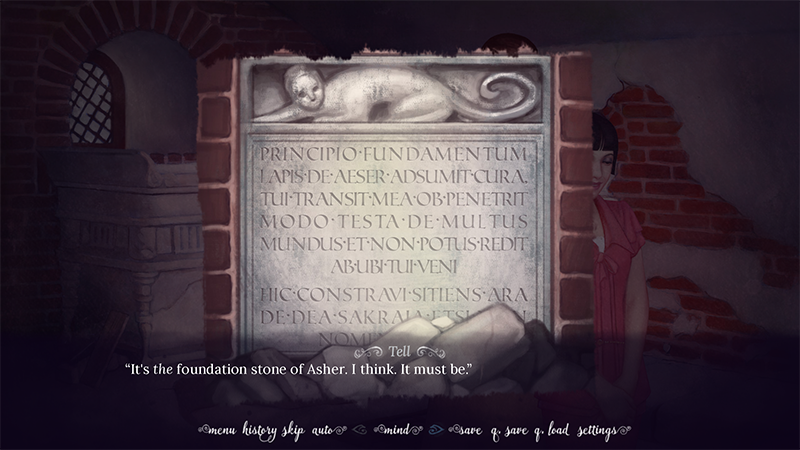
Give the project a life of its own, so you always know what to do if you need to take a break for whatever reason. Have an outline or a game design document. There's no need to map out every detail, but keeping notes to remind you where you're going and what your purpose is with the project will make it much easier to pick it up again when life gets in the way.
I usually take notes on themes I want to explore and keep a list of scenes I really, really want to write, followed by a more in-depth summary of each major part of the story. I break my stories down into acts and scenes. The bigger the breakdown the better; I rarely summarize scenes with more than a sentence unless I am working on a particularly complex one.
Too much time on the outline makes it feel like you’ve already written the story, just without the fun part of writing it, and who wants to write something twice? (A game design document may require more detail depending on the genre or whether or not you’re working with collaborators, but that’s outside the scope of this post).
A Little Bit Each Day.
Write a to-do list. Sometimes the hard part is figuring out what to do in the first place, so make it easier for yourself by building a task list. Is it a storyboarding day? Do I write chapter three or is it time to develop the villain? It takes effort to decide what to do. If you always have a task list, especially with tasks broken down into small pieces, you'll be able to capitalize on your extra free time.
I often Bullet Journal, but there are also some apps that gamify your to-do list, and for some people this may be more helpful in getting through the long slog.
Meaningful Conflict
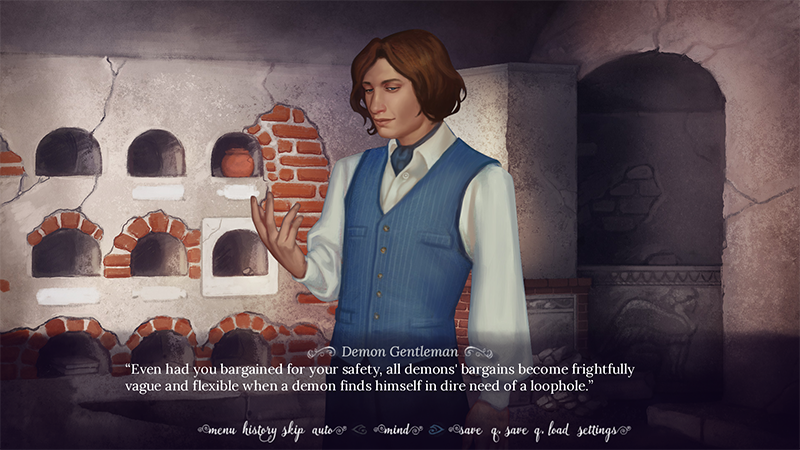
Stories are driven by conflict. I could make up some arbitrary conflict if I wanted, pit a couple of contrasting personality types against one another, but meaningful conflict motivates me where drama bores me. Markaius, the sort-of villain in my stories, manipulates everyone around him; his antics stir up all kinds of conflict. His true purpose is a secret, but I know why he does what he does.
So how do you create meaningful conflict? I suggest that you avoid conflict for the sake of drama. Think instead about conflict in terms of problem solving. There's a problem, if the characters don't deal with it, Bad Things will happen. Problems come first, then conflict. Problems, in turn, stem from character—their personalities, quirks, flaws, dreams.
Story problems can be silly or serious, but they are a major reason why you come back to your story in the first place. The story for my first game, Asher, might break the central problem/conflict relationship down like this: if the protagonist, Tetrine, puts her head in the sand and refuses to learn about her magical talent (problem), then eventually her ignorance will cost her dearly (conflict).
Tetrine’s desire to live a peaceful life is so powerful it leads her to put her head in the sand. I enjoy writing about the problems that arise from her personality type, which leads me to my next point.
Make Characters You Like
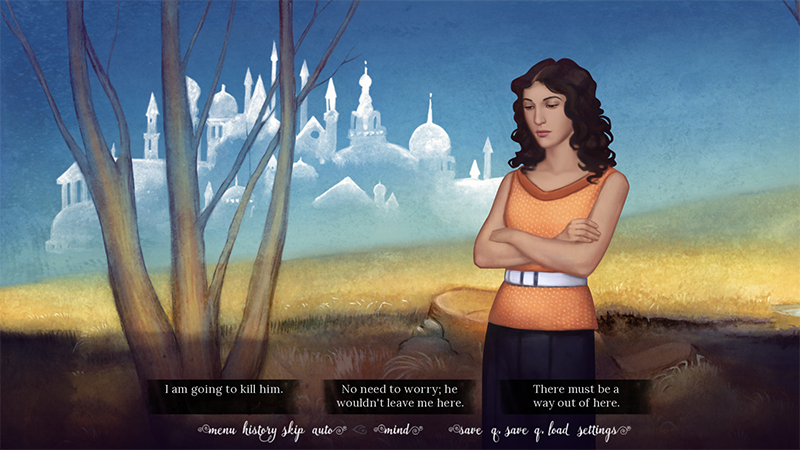
Preferably really like. Or maybe hate. You're going to be spending a lot of time with these people, so make characters you can write again and again. Flaws cause problems and problems create conflict—for example, my character, Kalevel, is vengeful. This gets her into trouble at times. I write interactive fiction, so the player can minimize or maximize a character's flaws. Kalevel can reveal the more balanced side of vengeance (justice) or she can embrace it fully, or the player can explore a third side of her: resignation. These facets drive the various outcomes of the story and keep me as the writer endlessly entertained. Even in a non-interactive novel, you'll want to bring out the best and the worst traits in your characters.
Choose descriptors that are nuanced. Vengeance has a flip side (justice). A vengeful character at their best wants justice, a cowardly character wants peace, a manipulative character may believe they are manipulating for the best outcome for everyone. Good descriptors can have negative sides, too. A compassionate character may accidentally cause more harm than good.
Learn about anthropology and psychology—many universities put lectures up for free on YouTube.
Troubleshoot Your Lack of Motivation
In my experience, if I don’t feel like writing, it is because certain scenarios or characters are not working. It is often a sign that I need to fix things. It can also be a sign that I feel obligated to write about something I don’t want to write about, or that I don’t believe in. I initially wanted Tell a Demon to be a straightforward romance, but this approach quickly felt forced to me. There were all these obstacles—I discovered while writing that Tell, the protagonist, had some old hurt and resentment about the love interest, Julius. She was too shrewd to simply take the sort of emotional leap of faith that would occur in a classic romantic scenario. There were also good reasons for her to be cautious. Listening to these hunches made the story better and more believable in the long run, and the process of writing became easier.
It’s different from person to person, but try some detective work on your feelings and find out what problems they may be indicating about the creative project itself.
What’s My Purpose?
Decide your purpose every time you get ready to work. This is especially necessary when you have multiple tasks. For instance, I write and illustrate my story games. Is it a writing day? A drawing day? Figure out what you need to do every day, even moment by moment, and refer back to your task list and outline.
Answer the question, what is my purpose with this project today/this evening/this morning etc...? I’ve found this helps immensely with staying on task.
You can even extend this question to social media and ask: what is my purpose spending time on twitter right now? Answer, in one case: I’m procrastinating because writing this scene is hard. And I’ve found I procrastinate less often as a result, and sometimes recognize problems with the story that I wasn’t aware of. I didn’t know that I found that scene difficult to write until I asked myself what my purpose was spending time on Twitter, then I could sort out the problems with it once I was aware.
It’s Not Lack of Motivation—It’s Exhaustion
Rather than unmotivated, ask if you’re exhausted. If I really don’t feel like writing and it’s not about fixing a problem in the story itself, it may be because I’m burnt out or feeling sick.
Sometimes it's good to shelve the project during a rough time, but often you can simply scale down your tasks if you’re concerned about losing momentum. Start smaller, interview your characters instead of writing a chapter, write some light banter between two characters, sketch some costume designs while listening to music. If the project has a strong foundation, you'll be able to take breaks and come back to it when you're ready. Burn out is usually a bad time to make decisions, so don’t toss all your hard work out the window.
Recycle
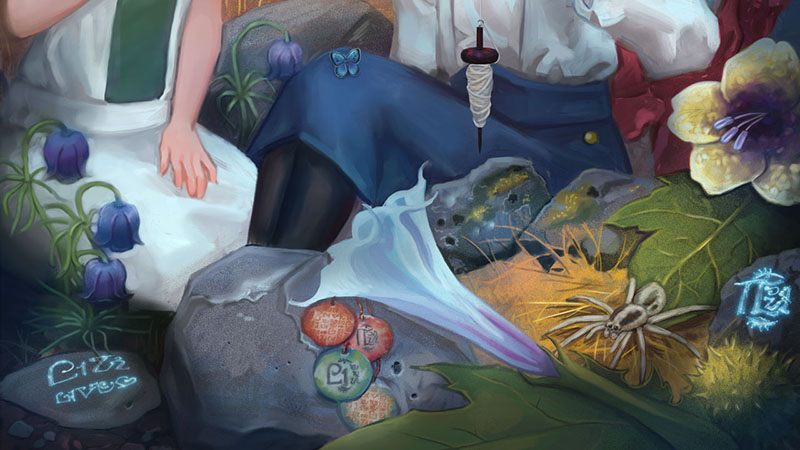
If a project really must go, see what you can scavenge from it. Starting completely from scratch is sometimes necessary, but it’s also more difficult to create motivation from a blank page, and the foundation is the hardest part to build. For instance, the Nell marks from the world of Aeser originally came from a fictional alphabet I designed in 2011 for a different story. I spent a month developing the alphabet, reading up on alchemical symbols and the origins of Times New Roman (long story). It was something I liked best from that project, so I used it in the World of Aeser series. If there’s a character or setting or anything you still like about a project, recycle it in some other project.
Conclusion
Finally, don’t wait for motivation. Create motivation by making characters you’re interested in, writing about situations and themes and settings that you’re excited about, and fixing the things that bore you or that feel forced about your story.
Author Links
